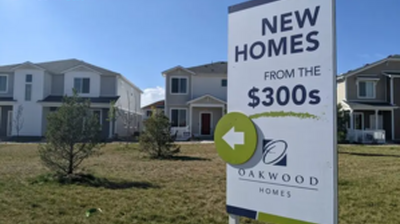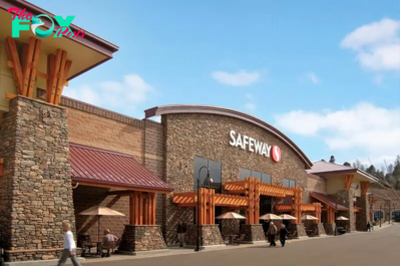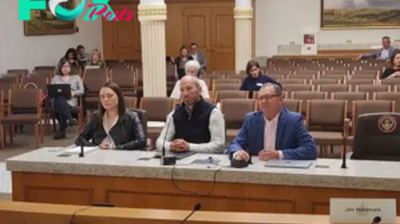Technology
Rural Colorado awarded $113.5 million to build better broadband, but most applicants left empty-handed
While filing papers at her office earlier this month, Leslie Mastroianni’s Apple watch vibrated. An email from Advance Colorado announced the Southern Colorado Economic Development District had won a grant to improve broadband infrastructure in southeastern Colorado.
Then her watch buzzed again. And again. Two more awards.
“I felt like I was giving birth to babies,” said Mastroianni, SCEDD’s executive director. “Then the buzzing stopped. I have a competitive streak, which is good in the grant writing business. So, yes, I was a little disappointed. A little surprised that some weren’t funded. …. But I’m very happy with the three and this gives us the first dip in the broadband pool.”
SCEDD, an official economic development district, had applied for seven. The three it won will receive $12.5 million to help it and its partners improve fiber broadband infrastructure in four southeastern counties for 1,410 households. In all, 13 applicants to the Capital Program Fund were awarded $113.5 million to connect 18,769 homes and businesses. But the Colorado Broadband Office acknowledged it received 112 applications asking for more than $642 million.
“The process was highly competitive” and five-times oversubscribed, Brandy Reitter, the broadband office’s executive director, said in an email.
Big winners included Larimer County, picked for eight projects as municipal broadband services Fort Collins Connexion and Loveland Pulse expand their service areas to, respectively, 1,409 and 419 homes or businesses. Douglas County-based Maverix Broadband, which is expanding into Chaffee, Saguache and the outskirts of Boulder, will tackle the largest number of individual users, at 6,144. And Clearnetworx, based in Montrose, received the single largest award of $25.3 million, which it will use to provide broadband to 4,102 unserved or underserved homes and businesses.
Through Advance Colorado, the broadband office prioritized CPF applications based on the number of unserved (Tier 1) and underserved (Tier 2), which considered only households with no internet or internet slower than 100 megabits per second. Applications that used fiber were given preference, as did those that kept costs down for customers. Reitter shared a list of criteria that scored the highest:
- Fiber, unserved/underserved areas and public/private funding matches.
- Fully subsidized affordability plan consistent with the FCC’s Affordable Connectivity Program.
- Projects located in an enterprise, opportunity, HUB zones, demonstrating need.
- Community support.
- Complete and thorough applications with no omissions.

Reitter said the state office is sitting down with those who didn’t get CPF money to develop better ideas for other funds, including Broadband Equity Access and Deployment Program and the Broadband Deployment Fund.
“We’ll inform them of improvements to projects and applications so they have a better chance of success in BEAD and other grant programs,” Reitter said.
More money on the way
BEAD refers to the Broadband Equity Access and Deployment Program, a $42.5 billion federal provision created out of the Infrastructure Investment and Jobs Act in 2021. Last year, a federal agency awarded $826.5 million to help Colorado end its digital divide. That should be enough to get the remaining 10% of Colorado households to at least 100 Mbps, officials said.
Meanwhile, the $10 billion Capital Project Fund, from the American Rescue Plan in 2021, also supports the goal to get 99% of the state’s households online at speeds needed for a modern family with multiple members on video streams for school, work or Health consultations.
After appeals are completed and award winners are finalized, the clock starts ticking. The projects must be completed by the end of 2026 in order to take advantage of the full funding. And some of the winners say the amounts were just what they needed to complete the job on time. Visionary Broadband, a Wyoming internet provider that serves Gunnison and Kremmling and is expanding in Colorado, was awarded $9.1 million to complete two projects for 2,344 households in Pagosa Springs and Buena Vista.
“Visionary bid these projects knowing that the grant funds plus the required match would be enough to get the job done,” said Brian Shepherd, Visionary’s vice president of grant engagement. “We did not want to leave projects incomplete. We believe it’s important to fulfill our commitments.”
☀️ READ MORE
Colorado’s effort to attract more federal broadband funding seems to be working
Internet service in western Colorado was so terrible that towns and counties built their own telecom
There are still households with no internet
Mastroianni said SCEDD didn’t appeal any of its rejected applications but they did want to learn more. The organization works to improve economic development in the 13-county region, which stretches from Colorado’s southeastern corner of Baca County to Kiowa County in the north and west to Chaffee and Lake counties. A few years ago, SCEDD studied what the community needed most. Broadband rose to the top, with 26% of the community unable to access adequate service of at least 100 megabits per second. And 10% had no internet access.

Hearing about the new federal funding sped up SCEDD’s timeline. For the three awards, the organization had partnered Vero Networks for Lake County service to handle 132 addresses north of Leadville, and SECOM, the internet subsidiary of the Southeast Colorado Power Association, for the other two projects. Those include plans to build service to 340 locations in and around Avondale, and to 938 locations in Bent and Otero counties.
Mastroianni said she knew the competition was stiff. But in one case, a large project targeting several rural households in the southeastern plains didn’t get picked. “The number of unserved wasn’t nearly as high as the others. It was a good project but the majority of the locations were underserved,” she said.
Aiming to do what big cable, telecoms did not
In the past few decades, public funding helped a lot of large cable and telecom companies build out their high-speed service. But there are still households beyond the end of the cable and fiber lines, as corporations deemed it too expensive.
That’s what happened to David Lindauer when he moved east of Parker about a decade ago. He was in search of a rural property so his wife could keep horses.
“Dave had two things on his requirement list and that was a paved road to the house and good internet. He lost out on both,” recalled business partner Tyler Bartholomew. “He was constantly dropping on our software development calls with our team.”
-

 Technology2h ago
Technology2h agoTeslas are deadliest road vehicles despite safety features: study | The Express Tribune
-

 Technology15h ago
Technology15h agoThere Is a Solution to AI’s Existential Risk Problem
-

 Technology17h ago
Technology17h agoUS pushes to break up Google, calls for Chrome sell-off in major antitrust move | The Express Tribune
-

 Technology21h ago
Technology21h agoPublic health surveillance, from social media to sewage, spots disease outbreaks early to stop them fast
-

 Technology23h ago
Technology23h agoTikTok, PTA host youth safety summit in Pakistan | The Express Tribune
-

 Technology1d ago
Technology1d agoWhy a Technocracy Fails Young People
-

 Technology1d ago
Technology1d agoTransplanting insulin-making cells to treat Type 1 diabetes is challenging − but stem cells offer a potential improvement
-

 Technology1d ago
Technology1d agoJapan's $26 billion deep sea discovery sparks serious environmental concerns | The Express Tribune



























